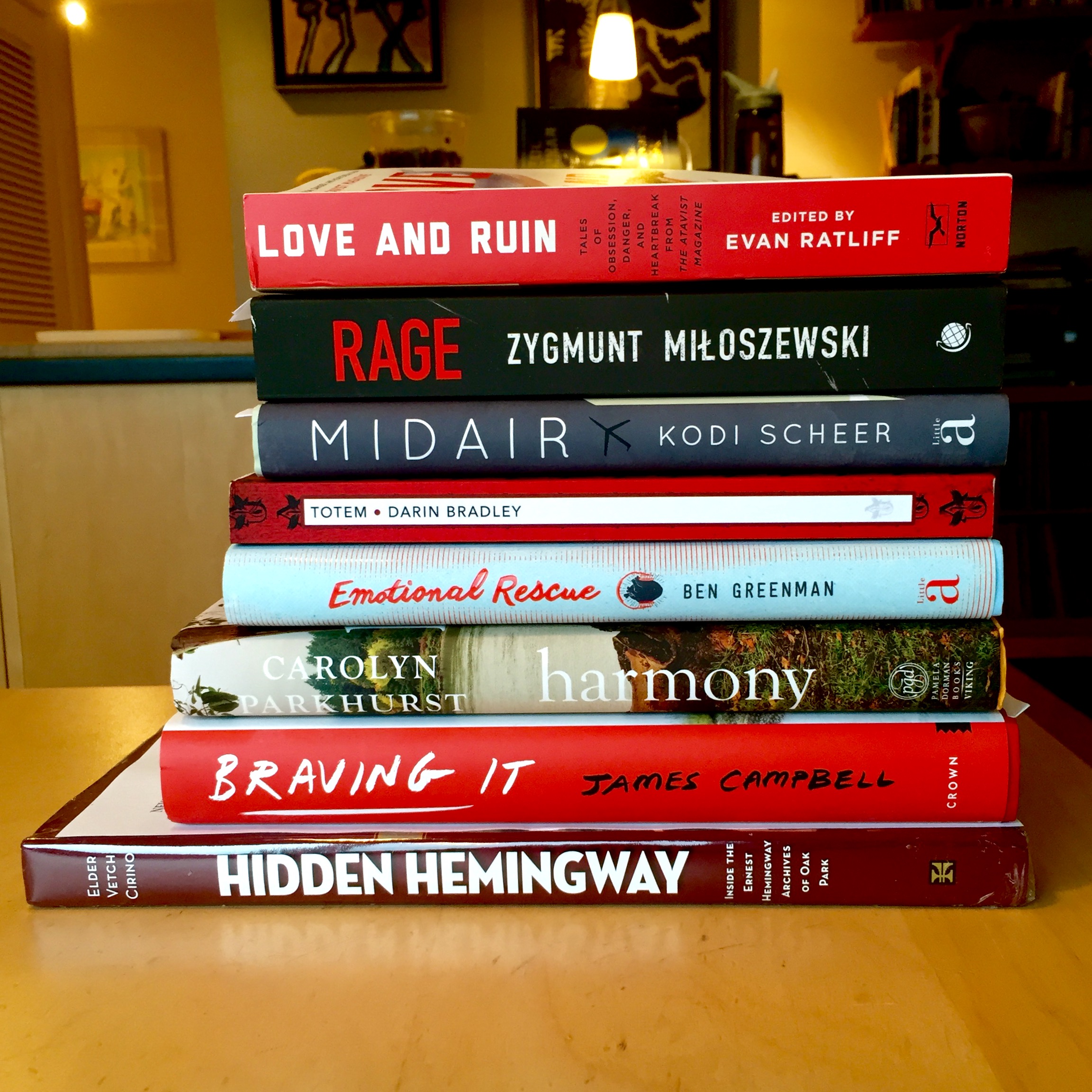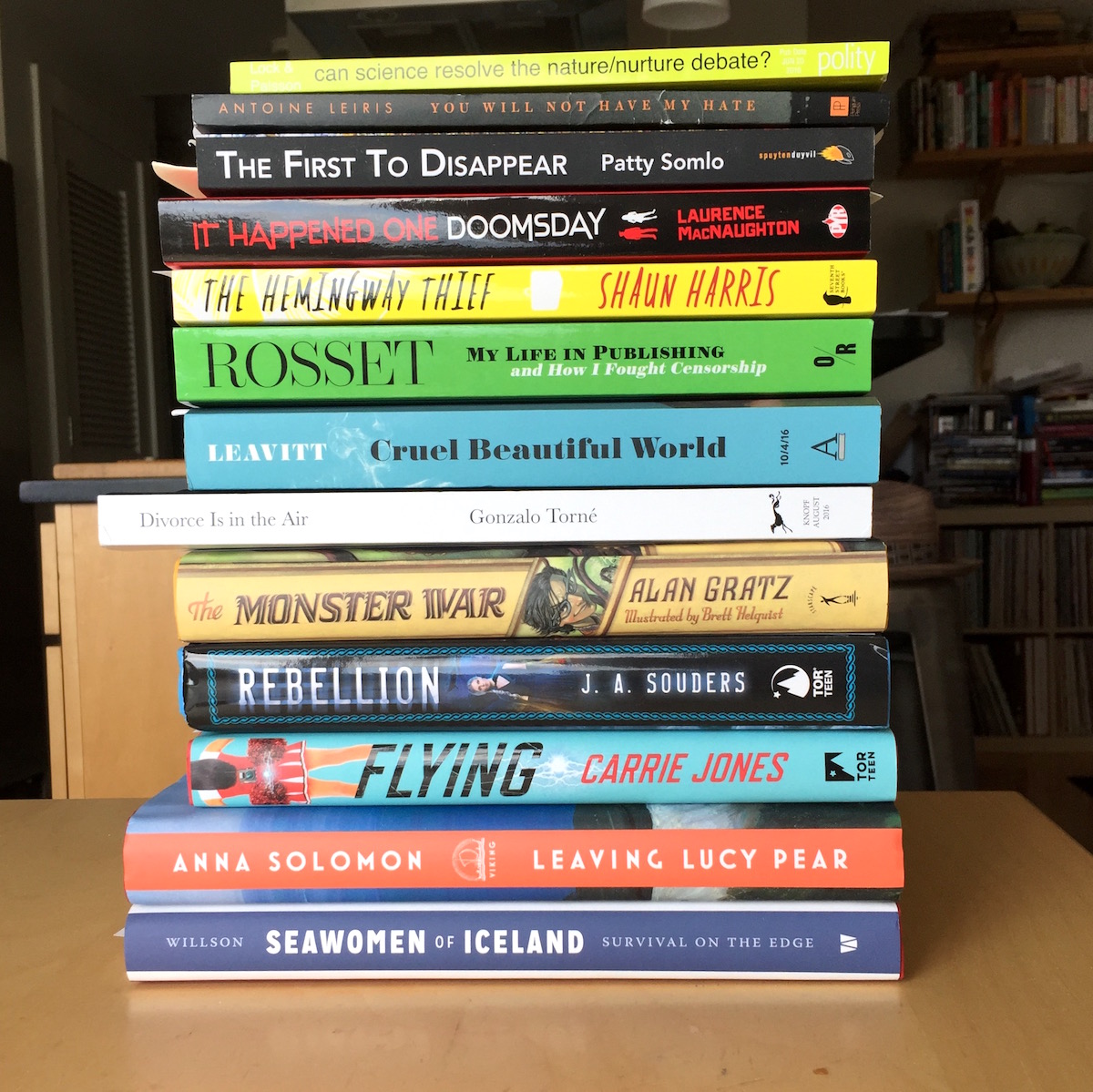An anticipated second novel from an ex-Seattlite!
Sponsor (and previous Seattle resident!) Sonya Chung's second novel, The Loved Ones is accruing a lot of interest before its publication date in October. The Millions put it on their "most anticipated list", for example.
We've got a nice long excerpt from the book on our Sponsor's page for you to read. We hope you'll like the book enough to consider pre-ordering it from your favorite store.
It's thanks to sponsors like Sonya Chung, and readers like you, that we're able to keep the pixels lit up here at the Seattle Review of Books. We've just released our next block of sponsorship opportunities. Check them out on the sponsorship page, and grab your date before they're gone.
The universal darling
Published July 11, 2016, at 12:00pm
What does Belle Epoque France have to tell us about our modern Instgramming ways? Swati Nair digs into a famous novel to find out.
Nicole from Comics Dungeon recommends your next summer reads
Every Monday remaining in the month of July, we’ll talking to Seattle-area booksellers about the books they’re most excited to read this summer.
Events coordinator Nicole Lamb has worked at Wallingford’s Comics Dungeon for nearly five years. She’s especially interested in all-ages comics and comics with an LGBT angle, so when she’s asked about her favorite new summer comics, she can’t choose between her two passions.
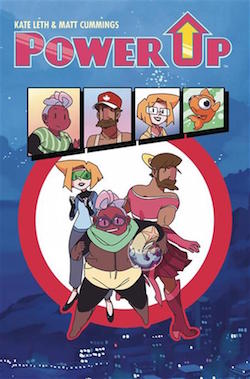
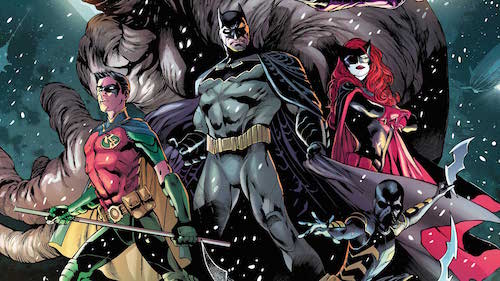
A more mainstream adult monthly comic that Lamb has been enjoying is the new run on Detective Comics from DC, which she describes as “Batman boot camp.” In it, Batman forms a team of younger heroes with the intent of training them to “do detectiving” and face off against a larger threat on the horizon. The real draw for Lamb is the character of Batwoman, a strong, independent lesbian named Kate Kane who was forced to leave the military because of Don’t Ask Don’t Tell and, after an encounter with Batman, became inspired to fight crime. Lamb loves Batwoman’s “queer thing” and she finds the character “inspiring and interesting,” an “underground kind of bat-hero.” Detective Comics she says, proves that “there’s some hope for mainstream comics.”
If you’d like more recommendations from Lamb, feel free to seek her out at Comics Dungeon. You can also subscribe to their weekly newsletter and check out their Perfect Bound Podcast, where Nicole regularly discusses upcoming store events and recommends what she’s been reading lately.
The Sunday Post for July 10, 2016
Mother, Writer, Monster, Maid
Rufi Thorpe’s article is a jarringly honest reflection on her attempt to reconcile art, motherhood, and marriage. It exemplifies the vulnerability that comes with good writing and reveals a litany of thoughts that open a window into the multifaceted life of an individual woman.
For me, the conflict between motherhood and my life as a writer is not so much Brooks’ fear that art’s job is to unsettle, while a mother’s job is to make safe. I unsettle and disturb my children all the time. I remain unconcerned that my safe, middle-class life as a stay at home mom makes me less edgy or interesting. I view my own interestingness as being directly related to the thoughts I think and the work I do rather than the aesthetics of my leisure time. After all, Wallace Stevens was an executive at an insurance company. The idea that parenting is any more boring than working at an insurance agency is absurd.
Still, there is a concern that the stank of uncool motherhood will befoul the beautifully tormented artist. It is, I think, this same stank that women’s magazines would like to occasionally excise from my work. In the novel Dept. of Speculation, which seems to be an epicenter for these sorts of worries in the Geist, Jenny Offill’s protagonist and narrator writes: “My plan was to never get married. I was going to be an art monster instead. Women almost never become art monsters because art monsters only concern themselves with art, never mundane things. Nabokov didn’t even fold his own umbrella. Vera licked his stamps for him.”
The Relationship Between Creativity and Mental Illness
This hot topic in literature and psychology is incredibly polarizing. While some hate the “tortured genius” idea, others vehemently defend it. But new angles and studies continue to emerge, as Maria Popova discusses in her article about Nancy Andreasen.
Once she became a psychiatrist, having come from a literary world “well populated with people who had vividly described symptoms of mental illness,” Andreasen decided to apply everything science had uncovered in the decades since Ellis’s work and design a rigorous study on the relationship between creativity and mental illness. Andreasen had attended the University of Iowa Medical School and had completed her residency in psychiatry there — a somewhat fortuitous circumstance that presented her with the perfect, quite convenient sample pool for her study: the Iowa Writers’ Workshop, one of the most prestigious creative-writing programs in the world, which has included such distinguished faculty as Kurt Vonnegut and Annie Dillard since its inception in 1936.
Andreasen’s study had a couple of crucial points of differentiation over Ellis’s work and other previous efforts: Rather than anecdotal accounts in biographies of her subjects, she employed structured, first-person interviews; she then applied rigorous diagnostic criteria to the responses based on The Diagnostic and Statistical Manual of Mental Disorders, the bible of modern psychiatry.
Police Shootings Won’t Stop Unless We Also Stop Shaking Down Black People
Under the layers of outrage and explanations of police shootings is one less-addressed reason: the fiscal element behind the frequent emergence of new names, hashtags, and protests. Jack Hitt explains that police feel pressured to bring in more revenue for the city or state, which leads to cases such as San Diego, where African Americans and Latinos — who comprise less than one third of the population — make up almost two thirds “of those searched during a traffic stop.”
There is still no comprehensive study to determine just how many cities pay their bills by indenturing the poor, but it is probably no coincidence that when you examine the recent rash of police killings, you find that the offenses they were initially stopped for were preposterously minor. Bland's lane change signal, DuBose's missing plate. Walter Scott had that busted taillight — which, we all later learned, is not even a crime in South Carolina. Eric Garner was selling loose cigarettes. When Darren Wilson was called to look into a robbery, the reason he initially stopped Michael Brown was for walking in the street — in Ferguson, an illegal act according to Section 44-344 of the local code. Between 2011 and 2013, 95 percent of the perpetrators of this atrocity were African American, meaning that "walking while black" is not a punch line. It is a crime.
The American Dream Is Alive in Finland
Bernie Sanders’ self-identification as a socialist ignited a lot of debate and defense of American ideals. Uri Friedman talked to Anu Partanen, a Finn who published a book claiming that these American Dream ideals are in fact better executed in Nordic countries. However, she moved to the US in 2008 under the impression she would find more work as a journalist. Friedman covers Partanen’s argument and her contradictory move to New York City.
Partanen’s principal question is the following: What’s the best way for a modern society to advance freedom and opportunity? She explains that Nordic governments do so by providing social services that the U.S. government doesn’t—things like free college education and heavily subsidized child care. Within that big question, Partanen poses more pointed questions about contemporary life in the United States: Is “freedom” remaining in a job you hate because you don’t want to lose the health insurance that comes with it? Is “independence” putting your career on hold, and relying on your partner’s income, so you can take care of a young child when your employer doesn’t offer paid parental leave or day care is too expensive? Is “opportunity” depending on the resources of your parents, or a bundle of loans, to get a university degree? Is realizing the American Dream supposed to be so stressful?
‘The Arrangements’: A Work of Fiction
Chimamanda Ngozi Adichie wrote a short story for the New York Times Book Review, and it’s amazing. Mrs. Dalloway Trump family editon follows Melania Trump's day of arrangements.
Melania decided she would order the flowers herself. Donald was too busy now anyway to call Alessandra’s as usual and ask for “something amazing.” Once, in the early years, before she fully understood him, she had asked what his favorite flowers were.
“I use the best florists in the city, they’re terrific,” he replied, and she realized that taste, for him, was something to be determined by somebody else, and then flaunted.
EDGE OF MORNING: Native Voices Speak for the Bears Ears - Kickstarter Fund Project #27
Every week, the Seattle Review of Books backs a Kickstarter, and writes up why we picked that particular project. Read more about the project here. Suggest a project by writing to kickstarter at this domain, or by using our contact form.
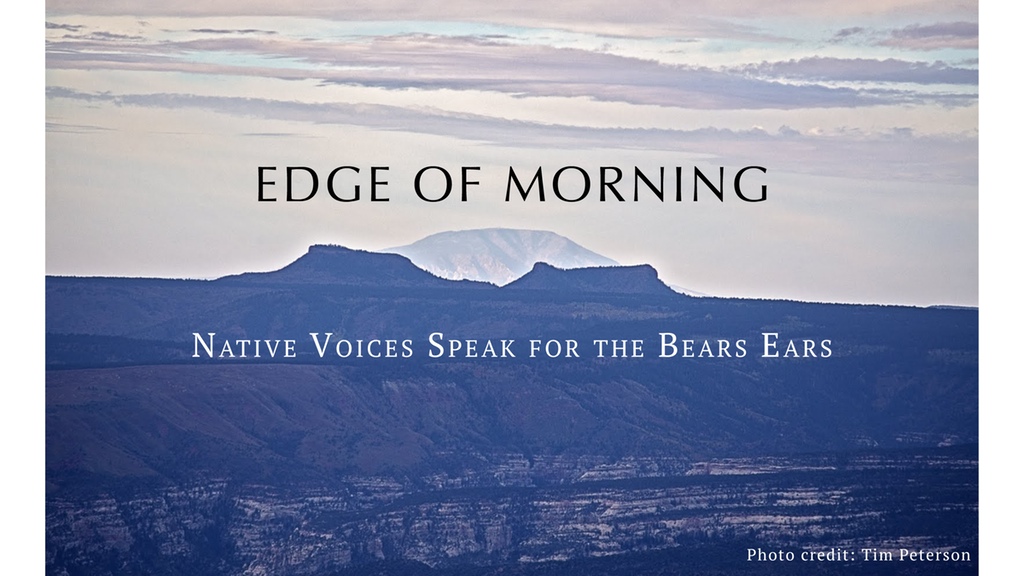
What's the project this week?
EDGE OF MORNING: Native Voices Speak for the Bears Ears. We've put $20 in as a non-reward backer
Who is the Creator?
What do they have to say about the project?
How can we protect a sacred landscape without knowing its stories? Help native voices save the Bears Ears with this hardcover book.
What caught your eye?
The Bears Ears is a land region of 1.9 million acres in Southern Utah. Ancestral land on the Colorado Plateau. It's the home to amazing history of our lands indigenous peoples, including petroglyph, ancient villages, and other important sites, many of which have been vandalized. Five tribal governments have come together to seek protection for the Bears Ears, and the historical resources it holds.
And this anthology seeks to tell stories by native writers about the Bears Ears and its importance. Storytelling is a way of making sure the importance of the land is known, and can help spread awareness for what the coalition is attempting.
Why should I back it?
It's a worthy project, for one, but be selfish and order it because it's going to be a good book. Hardcover, with introductions, maps, 15 essays and poems about the Bears Ears. Let's show a little love to people using books as a way to spread awareness for something larger themselves, a novel way to get the word out about an important part of the history of this land. Think about how you would have heard about this project 15 years ago, if you did at all? Here's a chance for you to be involved, and watch the project unfold, all while gaining a handsome volume.
How's the project doing?
They're 29% funded with 18 days to go, so they need the help. Put your pledge in, and spread the word!
Do they have a video?
Kickstarter Fund Stats
- Projects backed: 27
- Funds pledged: $540
- Funds collected: $440
- Unsuccessful pledges: 0
- Fund balance: $500
Book News Roundup: David Sedaris, Lesley Hazleton, Tatiana Gill, and more
I'm already getting excited to introduce David Sedaris when he reads at Benaroya Hall on Wednesday, November 16th. (Here's last year's introduction.) If you're at all interested in attending this reading, you should know that tickets are on sale now, and they usually sell out very early. I attend a lot of readings, and I can tell you that Sedaris is the best reader I've ever seen. He also sticks around and signs everyone's books before and after the reading, taking the time to have a personal conversation with everyone in line. I hope to see you in November.
Video of Lesley Hazleton's TED Talk about soul isn't available online yet, but this account of her recent talk certainly has us intrigued — especially the bit where she describes fundamentalists:
“It’s not that they have no soul, it’s that something in them seems to have shriveled. They’ve hunkered down and built a wall inside themselves. afraid of the unknown. They live walled off from the world.”
Seattle cartoonist Tatiana Gill just published an autobiographical comic titled "My Body Positive Journey" to her website. It's all about the long journey of coming to peace with yourself. I reviewed a few of Gill's autobiographical comics back in November; if you like this comic, you should consider buying one of her published works.
What common thread unites Man Booker Prize winners? You can filter out the winners using this interactive infographic, but the answer, unfortunately, is "they're men writing books about men."
I often use the New York Times Book Review as an example of the kind of stodgy, establishment-friendly book reviews that we don't try to write at the Seattle Review of Books. So it's only fair that I share a NYTBR piece that absolutely knocks it out of the park: Jennifer Senior's review of serial plagiarist Jonah Lehrer's A Book About Love is that rarest of reviews: the generous takedown. You get the sense in reading the review that Senior gives Lehrer multiple opportunities to prove himself, but he disappoints her at every opportunity. Senior's review is intelligent, dramatic, funny, and never cruel for cruelty's sake. It's the best review I've read at the Times in years. You should read it.
The intense-sounding Computational Story Laboratory has pulled apart and analyzed novels and identified the "Six Basic Emotional Arcs of Storytelling." This is intrinsically interesting stuff, although one can picture Hollywood immediately turning it into a shitty formula for screenwriting, the way the work of Joseph Campbell has been twisted into a bad story factory. Anyway, those six arcs are:
A steady, ongoing rise in emotional valence, as in a rags-to-riches story such as Alice’s Adventures Underground by Lewis Carroll. A steady ongoing fall in emotional valence, as in a tragedy such as Romeo and Juliet. A fall then a rise, such as the man-in-a-hole story, discussed by [story-mapper and novelist Kurt] Vonnegut. A rise then a fall, such as the Greek myth of Icarus. Rise-fall-rise, such as Cinderella. Fall-rise-fall, such as Oedipus.
The Help Desk: Maybe it stands for "Not Pleasing Readers"
Every Friday, Cienna Madrid offers solutions to life’s most vexing literary problems. Do you need a book recommendation to send your worst cousin on her birthday? Is it okay to read erotica on public transit? Cienna can help. Send your questions to advice@seattlereviewofbooks.com.
Dear Cienna,
Some time ago, my local NPR affiliate stopped interviewing authors on a regular basis. They used to do author interviews practically every day, but now they’ll only feature a segment on a book once or twice a week, if I’m lucky.
This happened around the same time that the station stopped featuring as much local content as it used to. And it recently got involved in a very sketchy plan to buy out a smaller NPR affiliate in a situation that is way too distasteful to get into here.
But my main thing is the lack of author interviews. I thought they were a great way to get a ton of perspectives on the air, and they were terrific ads for readings at local bookstores.
So my issue is: how do I make my displeasure known? Do I keep donating to the NPR affiliate just because they’re the best of a bunch of terrible options, or do I stop donating and send them a letter explaining why? Even in their current diminished state, I’d be despondent if they suddenly disappeared off the radio dial because local media is so diminished as it is. How do I get their attention and let them know that they should be interviewing more authors in such a way that I don’t threaten their existence?
Jim, University District
Dear Jim,
What would your daily commute be like without NPR? Democracy Now! is only an hour long and spiders, while excellent travel companions, are prone to car sickness. If you have the financial flexibility to continue donating, I would encourage you to do so.
Catholics and Mormons tithe, Muslims practice Zakat, atheists have lottery tickets, and agnostics have public libraries and NPR. Much like voting, tithing involves buying into an imperfect system with the fervent hope that someday, you will be rewarded for your efforts.
And having once worked in journalism, I’d bet you five MegaMillions lottery tickets that your local NPR reporters are as frustrated than you (if not more so) with the state of their industry. Their resources are continuously being cut at a time when the city in which they operate is showcasing new, obscene riches every day. Feeling like there’s more popular support for another bar that sells $65 bottles of beer than for public radio, and that you can’t produce your best work without nearly killing yourself for pennies, is unbelievably depressing.
So donate. (If you have time, you could even volunteer.) But as a contributing member, you should also let them know you miss the daily author interviews. The most memorable criticism I ever got came with a small bouquet of flowers and a card that simply read, “You’re wrong.” It was funny, it was kind, and it made me reach out and engage with my critic when I otherwise wouldn’t have.
In the meantime, you’ve got at least one great alternative: This site’s very own Paul Constant is the most thoughtful and thorough author interviewer I’ve ever met (full disclosure: I consider Paul a “friend,” or as I prefer to call him, “human spider”).
Kisses,
Cienna
Portrait Gallery - Ursula K. Le Guin
Each week, Christine Marie Larsen creates a portrait of a new author for us. Have any favorites you’d love to see immortalized? Let us know
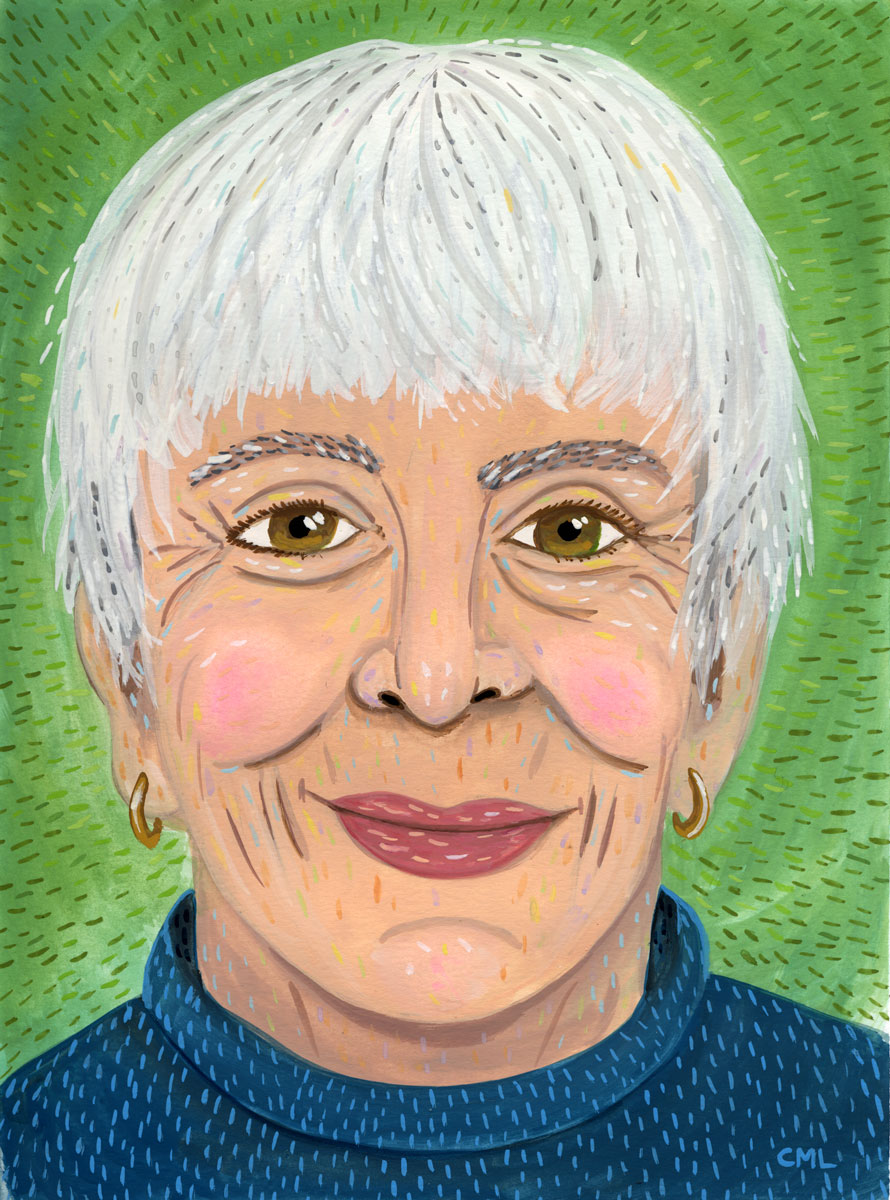
A resident of Portland since 1959, Ursula K. Le Guin is an incredibly influential writer, particularly in science fiction and fantasy. She received multiple Hugo and Nebula awards, among many other distinguished honors — despite experiencing numerous rejections at the beginning of her career. Le Guin gained widespread popularity in the 60s and 70s with her short stories and Left Hand of Darkness, a novel pioneering the feminist science fiction genre. Her influence extends to renowned authors such as Salman Rushdie, Neil Gaiman, and even George RR Martin, who lists her as a highly respected fantasist that impacted his own novels. Le Guin's daring themes — especially that of gender and androgyny in Left Hand of Darkness — admirably transformed her readers' perspectives.
The stuff that dreams are made of
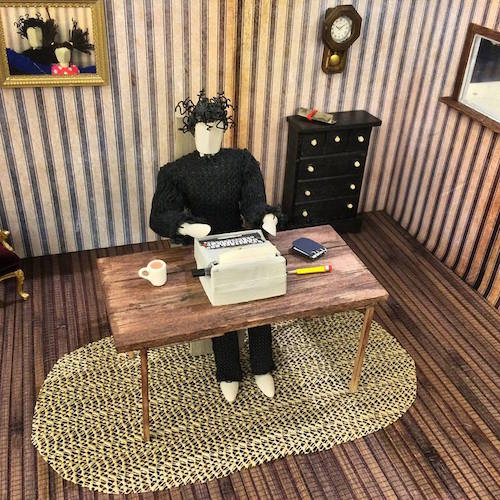
It’s easy to scoff at authors who complain about their book tours: oh, your publisher pays to fly you around the country to visit bookstores and meet people who are excited to see you? How horrible for you.
But in the new documentary Neil Gaiman: Dream Dangerously, the perils of a signing tour feel very visceral. In the span of three months, Gaiman estimates he has signed an average of three books for 50,000 individuals who have come to his events. He’s headlined nearly an event a day in that time. His thumbnail has fallen off because he’s signed so many books. He has to dip his hand and elbow into a bucket of ice water periodically because it’s the only thing that helps alleviate the pain caused by the repetitive stress of autographing books. Gaiman demonstrates a unique problem in the world of literature: he’s just too popular.
Dream Dangerously, which opens at the Grand Illusion Cinemas tomorrow and plays there through the 14th, follows Gaiman around what he claims to be his very last book signing tour ever. It’s a tour diary counting down to the final event, and along the way director Patrick Meany lays out a brief overview of Gaiman’s career, from his early journalism to his sudden success with the Sandman comic and his wildly popular novels.
It must be said that the first twenty minutes or so of Dream Dangerously is, to put it bluntly, not very good. We see endless oversaturated shots of Gaiman fans in line as Gaiman talks about writing in the clichéd language that elevates the craft to some kind of sorcery: all Gaiman ever wanted to do was to write, he always loved reading, the stories sometimes feel like they’re pouring through him as though he’s a conduit. That sort of thing. It’s rough going.
But once the film gets comfortable with its own rhythms, everything improves. Meany incorporates interviews with a wide variety of subjects — Patton Oswalt, DC Comics editors Karen Berger and Shelly Bond, comics writers Grant Morrison and G. Willow Wilson, the late Terry Pratchett — to intelligently and enthusiastically explain Gaiman’s impact on the world. Through the use of original comics pages and some animation to fill out the biographical sequences, the film comfortably handles exposition. Some of the interviewees actually do some decent literary criticism of Gaiman’s work, particularly in the stretch devoted to Sandman.
Ultimately, Dream Dangerously feels like an authorized biography: it is not really interested in asking hard questions of Gaiman, or suggesting that any of his books are anything less than genius. But as a look inside the final tour of one of the most popular writers on the planet, the film offers plenty of interesting details for Gaiman fans to soak up. Like those rockumentaries that fawn a little too much over their subjects, Dream Dangerously offers special access to Gaiman’s fans in exchange for a credulous tone that only hints at the negativity around the edges. For most fans, that’s an easy bargain to make.
Jealousy and gluttony
Published July 07, 2016, at 10:01am
In a very special Thursday Comics Hangover, we look at two books from Drawn and Quarterly that reimagine the dance between words and pictures.
Book News Roundup: Anybody need ten thousand dollars?
The Short Run Festival announced their latest special guest: Hatem Imam, a cartoonist and editor who was put on trial in Lebanon for the "crime" of publishing two supposedly controversial panels in anthology comics. This New Yorker story has more information about the trial. Imam's appearance in Seattle this fall will undoubtedly kick off a citywide conversation about religion, censorship, and satire. Short Run is on November 5th this year.
Starting on July 11th, Seattle-area fiction writers will be able to apply for the second annual Gar La Salle Storyteller award, "an unrestricted award of $10,000 given to a Washington State artist who is engaged in storytelling through their work in various artistic disciplines." That's some big money. The first winner of the Award was local writer Anca Szilágyi.
Over at Comics Grinder, Henry Chamberlain interviews David Schmader about the Bureau of Fearless Ideas, Weed: A User's Guide, and why pot isn't for everyone:
Yeah, and apparently gin turns some people into monsters. So, the idea is that not everyone is going to like weed; and don’t think there’s anything wrong with you if you don’t like weed. Because it’s all about your system and what kind of feelings you enjoy.
Your Week in Readings: The best literary events from July 6th - 12th
Wednesday July 6: Collecting the Dead Signing
Former Whatcom County Sheriff’s Office crime analyst Spencer Kope brings his debut mystery/thriller Collecting The Dead to Pioneer Square’s longest-running independent bookstore. Collecting is about an FBI agent with the power to track anybody anywhere—except for the one serial killer who previously escaped his grasp. Seattle Mystery Bookshop, 117 Cherry St., 587-5737, http://seattlemystery.com. Free. All ages. Noon.Thursday July 7: BOOM: Changing Seattle
The big editorial brains behind the upcoming anthology Ghosts of Seattle Past present new work as part of a new art show devoted to honoring Seattle “places lost, preserved and desired during moments of rapid development and growth.” With new art from C. Davida Ingram, No Touching Ground, and Rodrigo Valenzuela. Center for Architecture and Design, 1010 Western Ave., http://seattlearchitecture.org. Free. All ages. 5 p.m.Friday July 8: Away with Nancy Pearl
Calling librarian Nancy Pearl a “Seattle treasure” undercuts her wide-ranging appeal; she belongs to the world now. But Seattleites do have the unique honor of attending Pearl’s monthly book club at University Book Store. This month, she’s discussing novelist Amy Bloom’s magnificent immigrant novel Away. Go bask in Pearl’s heroic literacy. University Book Store, 4326 University Way N.E., 634-3400, http://www2.bookstore.washington.edu/. Free. All ages. 6:30 p.m.Saturday July 9: Intruder Release Party
It’s a big damn celebration for the 20th and final issue of the greatest cartooning newspaper in Seattle history. Intruder staff and contributors will hand out copies of their last issue, local cartoonists and small press will present an outdoor book fair, comics genius Josh Simmons will sign books, and everyone will get a little bit weepy after drinking too many beers. Fantagraphics Bookstore & Gallery, 1201 Vale St., 658-0110, http://fantagraphics.com/flog/bookstore. Free. All ages. 5 p.m.Sunday July 10: Southern Biscuits Cooking Class
Fuck brunch. Why bother waiting in a ridiculous line with your hungover friends to pay way too much money for weird bread products when you could learn how to make nature’s perfect brunch, instead? Brian Medford of Idewild Biscuits and Bakes pop-up bakery will teach a class of ten how to make sweet and savory biscuits. Book Larder, 4252 Fremont Ave N., 397-4271, http://booklarder.com, $70, all ages, 9:30 a.m.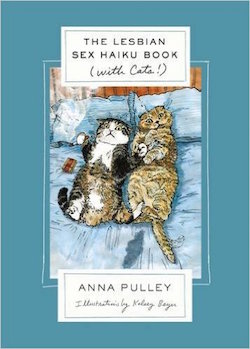
Monday July 11: The Lesbian Sex Haiku Book (with Cats!) Reading
Anna Pulley started writing haiku when her girlfriend dumped her. It quickly became an obsession. Now, her new collection The Lesbian Sex Haiku Book (with Cats!) boasts a gushy blurb by Tegan and Sara calling it “an adorable and hilarious way to start the day!” and urging the reader to — count these exclamation points — “Check it out!!!!” Elliott Bay Book Company, 1521 10th Ave, 624-6600, http://elliottbaybook.com . Free. All ages. 7 p.m.
Tuesday July 12: Clarion West Presents N.K. Jemisin
See our Event of the Week column for more details. Seattle Public Library, 1000 4th Ave., 386-4636, http://spl.org. Free. All ages. 6 pm.Literary Event of the Week: N.K. Jemisin at the Seattle Public Library
N.K. Jemisin’s 2014 short story “Walking Awake” begins with a very familiar power dynamic. In the opening lines a “Master” appears, “wearing a relatively young body.” The Master appraises some young, strong bodies, which we’re told will then be sent to the “transfer center.” It’s pretty clear within a few paragraphs that “Walking Awake” is a science-fiction take on the master/slave dynamic. Readers almost immediately get the sense that Masters subsume slave bodies entirely and live inside them, a surprising elaboration on the idea that anyone can “own” another human being’s body.
But Jemisin isn’t interested in a polite, finely wrought allegory. Soon we meet a Master’s potential body: “Ten-36 was a bright, pretty child, long-limbed and graceful, Indo-Asian phenotype with a solid breeding history.” Support staff assures Ten-36 that “The Masters were always kind. Ten-36 would spend the rest of her life in the tall glass spires of the Masters’ city, immersed in miracles and thinking unfathomable thoughts that human minds were too simple to manage alone. And she would get to dance all the time.” Like most fairy tales, it’s a lie. Ten-36 rests on one of two tables and prepares herself for the procedure.
When the Master came in and lay down on the right-hand table, Ten-36 fell silent in awe. She remained silent…when the Master tore its way out of the old body’s neck and stood atop the twitching flesh, head-tendrils and proboscides and spinal stinger steaming faintly in the cool air of the chamber. Then it crossed from one outstretched arm to the other and began inserting itself into Ten-36.
The image that Jemisin was coaxing the reader into imagining, that of two people lying on individual steel tables as headbands transfer thought waves from one body into another, was a feint for a more horrible truth, a transaction of spilled blood and torn flesh and broken bone. The reality of slavery, the horror of one body forcing its will on another, is always worse than whatever your imagination can muster.
Jemisin has written novels and short stories and even a novel adaptation of the Mass Effect video game. Her fiction is interested in the idea of freedom and free will, of oppression and struggle, and of trying to explain the inexplicable. It’s big-idea sci-fi, the kind of mind-exploding fiction that is not at all interested in showing you something you’ve seen before.
Seattle-area sci-fi writing organization Clarion West is bringing Jemisin to town as the fourth reader in their summer reading series, with a musical set by SassyBlack. If you believe that good sci-fi holds a mirror up to our time, this is the must-see Clarion West event of the year. Everything Jemisin writes about is tied to Black Lives Matter and Donald Trump’s nationalist racism and the legacy of violence that white people still enact on African-American bodies today. These are stories that tell the truth with such passion that you cannot avert your eyes for even a second.
Seattle Public Library, 1000 4th Ave., 386-4636, spl.org. Free. All ages. 6 pm.
A gripping drama from an emerging Israeli novelist
Sponsor Nir Baram has finally been brought to the English speaking world by Australian publisher, the Text Publishing Company. Now, his fifth novel, the gripping Good People, set in Leningrad and Berlin in 1938, is being released in the United States.
This gripping novel throws two lives together: a young woman in Leningrad, and a man in Berlin, who become complicit in great crimes. Be sure to check out a preview from the book on our sponsor's page, and see what Baram has in store for you. You can pre-order the book from link there, as well, if you like what you read.
It's thanks to sponsors like Nir Baram, and readers like you, that we're able to keep the pixels lit up here at the Seattle Review of Books. We've just released our next block of sponsorship opportunities. Check them out on the sponsorship page, and grab your date before they're gone.
Barging Right on In
Here, in two easy steps, is the secret to succeeding in Seattle:
- First, tell everyone you know about what you’re planning to do.
- Then, actually do it.
Number two is the most crucial part, obviously. Seattle’s writers and artists are drowning in aspiration; everyone has an idea of what they’d do with unlimited time and resources. They’d write a book, they’d start a citywide conversation about a topic that really matters to them, they’d build a community around a gallery or store or event. They love to talk about what they’d do and how great it would be, and then they never actually do it.
This is perhaps the most remarkable part of Seattle’s recent comics renaissance: our cartoonists have finally thrown off the regional curse of boundless, aimless ambition and started to build sturdy things together: The Short Run Comix & Arts Festival; Push/Pull Gallery in Ballard; and Max Clotfelter’s exuberant, long-running Dune night, a recurring community cartooning event at Café Racer.
The mainstay of Seattle’s comics community over the last two years has been Intruder, a free newspaper packed with the work of local cartoonists and hand-distributed to a slapdash assortment of local shops. The comics in Intruder are brash, experimental, and sometimes downright ornery; in an affront to the infamous “Seattle nice,” you get the sense that the cartoonists don’t care if you like them at all. Intruder has no advertising, explanations, or submission guidelines — in fact, aspiring cartoonists are often disappointed to discover that inclusion in the paper is invitation-only. It is that rarest of birds: Art for Art’s Sake, uncompromising and proud.
Despite its fierce organizational will, Intruder is about to end. This Saturday in Georgetown, the Fantagraphics Bookstore and Gallery is hosting a huge party to celebrate the release of its 20th and final issue, complete with musical acts, a sidewalk book fair, and lots of beer. You can expect tears and drunkenness and lamentations for the death of the official paper of record for Seattle’s cartooning scene. You can also expect more than a little concern over what this means for the future of comics in Seattle.
Intruder came together when a dozen cartoonists including Clotfelter and Marc Palm started hanging out and making one-shot minicomics. Clotfelter recalls that “I had submitted a couple of comics to [Brooklyn-based free comics newspaper] Smoke Signal, never gotten accepted, and then was like, ‘Why don't we just do it ourselves?’”
Before anyone had a chance to reconsider, the idea for Intruder was born. There was a lengthy discussion over what to call the paper, and Palm says “Underporch almost won,” but he happened to have just watched “an 80’s horror movie called The Intruder.” He thought the name “was a good design, simple,” and it reflected the cartoonists involved: “I knew our styles. This would be a good, semi-aggressive, creepy name for this paper.” It was, he says, the name that “everyone could live with.”
“I think we were all pretty naïve” at first, Palm says. They found a quality, affordable Seattle press at Pacific Publishing Company, collected $50 from each contributing cartoonist, and sent off the files. The first issue of Intruder was published in March of 2012. When they went to pick up 2000 copies of the paper, literally hot off the press and arranged in bales, everything became real. “It was beautiful,” Clotfelter says. “It was a thing to behold.” They threw a release party and invited all their friends.
There wasn’t really a point when anyone decided they would keep going, but that’s exactly what they did. Though Intruder started as a democracy, Palm eventually assumed an editorial role. “I didn't want to take power from anyone, I didn't want anyone to feel like they didn't have a voice,” he says, but someone had to keep an eye on all the moving parts, so he stepped up.
Back then, none of the original dozen cartoonists realized that they were contributing to a long tradition of free comics newspapers in Seattle, stretching from Michael Dowers’s Seattle Star from the 80’s and 90’s, to the Halloween-themed zines Jim Woodring occasionally published. And the legacy is continuing: papers inspired by Intruder have popped up in Bellingham, Los Angeles, and Minneapolis, and Palm and Clotfelter couldn’t be happier about it.
Intruder has never been in the business of publishing themed issues — Palm has always been very hands-off in terms of what people contribute — but lots of the strips in Intruder #20 share an air of mournfulness, of closure. It’s like the dramatic series finale of the weirdest, druggiest TV show you’ve ever seen.
Ben Horak’s installment of his recurring “Bullhook Alley” strip begins with a happy gremlin sitting in a treehouse. The walls are ripped away as an array of cartoon characters drawn in different styles swarm him. He tries to run, but there are too many of them—ninjas, praying mantis Mona Lisas, wolves, wizards, ambulatory letter R’s—and finally the strip concludes with a “Well, bye…” and a bang. It’s not hard to find a metatextual meaning in a clubhouse filling with cartoons until it bursts free of its walls and then explodes. Horak’s strip is the equivalent of a cartoonist’s Viking funeral, infused with more than a little anxiety over a scene potentially growing out of control.
So what does Intruder’s end mean for Seattle’s cartooning community? Is our most talented generation of comics artists since the 90’s glory days of Tom Hart, Jason Lutes, and James Sturm destined to disappear the way their precursors did? Already Intruder dynamos like Josh Simmons, Joe Garber, and Brian Dionisi are leaving town. Other cartoonists are loudly grumbling about rising rents. Every scene has to end.
But for his part, Palm sees this less as the end of an era and more the end of a beginning for Intruder’s contributors. The paper taught them that “having the deadlines, having that pressure, getting responses, having people show up at your party and like you — it's encouraging, and it's gotten us to these higher points.” Now, Palm says, “we need to start actually doing something,” by which he means graphic novels and books and larger, more ambitious projects.
Palm recalls a conversation between fellow local cartoonist David Lasky and Fantagraphics assistant publisher Eric Reynolds. Lasky asked, "why doesn't Fantagraphics put out books by more Seattle cartoonists?" Reynolds responded, simply, "because they're not submitting anything." Clotfelter and Palm both believe the community can rise to this challenge.
So there you go. You’re sad about Intruder going away? Make your own Intruder. Think Seattle should be producing more great comics? Create them yourself. Assume nobody’s going to do it but you. Make a statement. Figure out the first couple steps. Get your friends together.
And then do it.
Book News Roundup: Where will Amazon open their next bookstore?
The fact that Elie Wiesel passed away on the same weekend that Donald Trump tweeted a barely coded anti-Semitic graphic from a white supremacist group was more than just unfortunate timing: it served as a reminder that we need writers and advocates and witnesses like Wiesel in our public sphere more than ever. He will be missed.
The American Poetry Review just announced that Seattle author Jane Wong won the Stanley Kunitz Memorial Prize for her poem "I Put On My Fur Coat."
If you missed Lynn Schnaiberg's Crosscut profile of Elissa Washuta's new role as Writer-in-Residence at the Fremont Bridge, you should read it now:
What does pull her away from her books and laptop are the boats. Like the 205-foot Lady Lola “superyacht” she started following online. Oh, and the Fremont Avenue brawl for which she called 911. And the much-appreciated cellphone call she gets from the bridge operator every time the bridge is raised (a safety check to make sure she’s not on — or under — the bridge, since her tower affords access to its underbelly.)
Seattle author Matt Ruff has had a good idea: if you have any questions about his amazing new book Lovecraft Country, he's putting together a Frequently Asked Questions page on his site. Feel free to ask him anything, from book-club-friendly questions to specific plot points. It strikes us that very book should have a FAQ page.
The New York Post — ugh, sorry for the link — reports that Amazon is planning to open its first east coast Amazon Books brick-and-mortar store in Manhattan.
A reminder: please don't read Jonah Lehrer's new book. The fact that he's publicly failed so many times and yet is still being published by major presses is a serious indictment of the publishing industry.
I very much liked Ben Winters' Last Policeman Trilogy, about a detective on an Earth that's facing down an apocalyptic asteroid strike. I haven't read his new book, Underground Airlines, but the below tweet from BuzzFeed's Saeed Jones accurately dismantles the publishing industry's breathless coverage of the book. Don't just operate under the assumption that an idea is new, or else you'll look like an uncultured ass, or a racist ass, or a racist uncultured ass:
Octavia Butler did this in 1979. RT @PublishersWkly: In His New Novel, Ben Winters Dares to Mix Slavery and Sci-Fi https://t.co/yrBgbQyvC3
— Saeed Jones (@theferocity) July 5, 2016
The Blink Reflex
I have this notion that if you live long enough,
there are three or four great stories that you will have in your life.A story of a journey or a transformation.
A story of love, which will likely mean the loss of love, a storyof loss. And a story of spiritual illumination,
which, for many, will probably be the moment of death itself,the story untellable, its beginning and middle
and end collapsing with its teller into a disappearing conclusion.I have believed long enough in my notion
to know that it is a romantic notion, that it erodes each timeI realize that the shard and not the whole
comprises a life, the image and not the narrative. Otherwise,there’s no reason why all I remember of the airplane
I took as a child from one country to anotheris the moist towelette packet we were given with our meal,
the wonder and absurdity of it. Or that, in love,high in a tree in the dark, and high, he and I sat in the rain-damp
branches and ate 7-11 donuts. Or this, this pieceof a story that isn’t even mine, that isn’t even a story
but a glance of an experience, of the friend who held the straydog after it was struck by a car. Not knowing whether the dog
was dead, my friend called a friendwho worked for a vet. Poke the dog in the eye, this friend said.
Because if the animal no longer has a blink reflex,it probably means the animal is dead. Decades after
college, when you could do such a thing, I typed his nameinto a search engine to find out what became of the 20-year-old
boy from the tree. Like dozens of old keysin a drawer, so many of the wrong people with the right name.
The child dead from leukemia, with a school gymnamed for him. The wrestler who had a perfectly square jaw,
like a cartoon police detective in a fedora.When I arrived at a page that was certainly
about him, I no longer knew the face but I recognized the lifethat he had had. He had transferred to
another college, gone to film school, and become a producerof TV documentaries. A film about fishermen, the harsh fishing
season in Alaska. A film about Abraham Lincolnand a film about the last days of Adolf Hitler.
A film about the Sherpas who go up and down the Himalayas.
First of all: we at the Seattle Review of Books would like to wish you a happy 4th of July! Here's some Sousa for you:
Now: we're taking the day off, but we don't want to leave you in the lurch for summer reading, so we thought we'd share Queen Anne Book Company's page for the McClure Middle School's summer reading program. We wish this was our required reading in 6th grade. Nothing against Johnny Tremain, but the kids at McClure have an amazing mix of comics, sci-fi, and socially engaged literature to choose from. A reading list like this gives us hope for our country's future.
